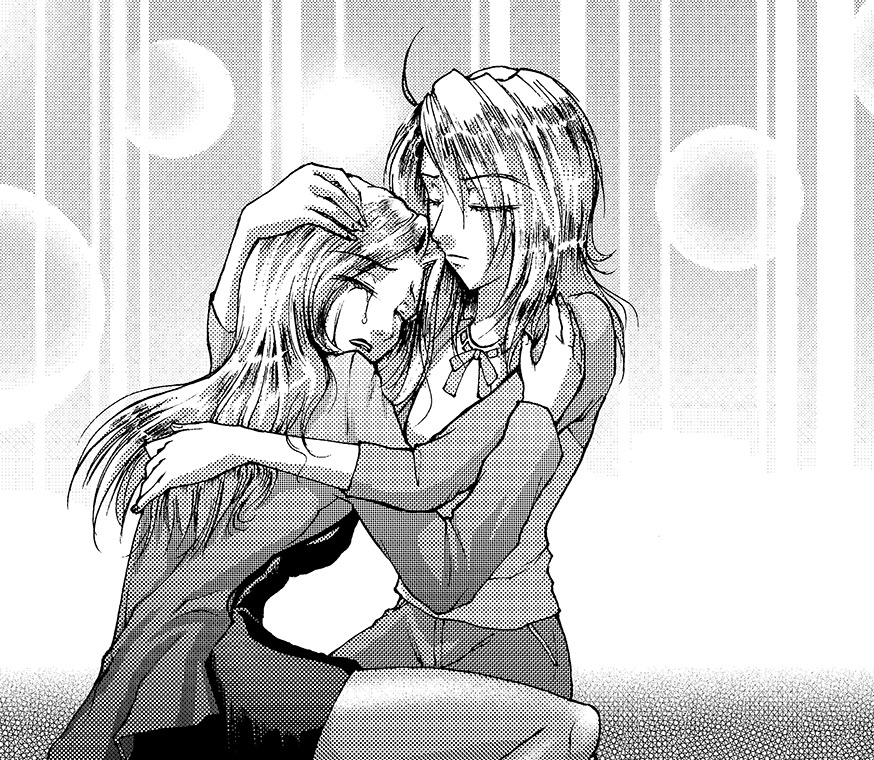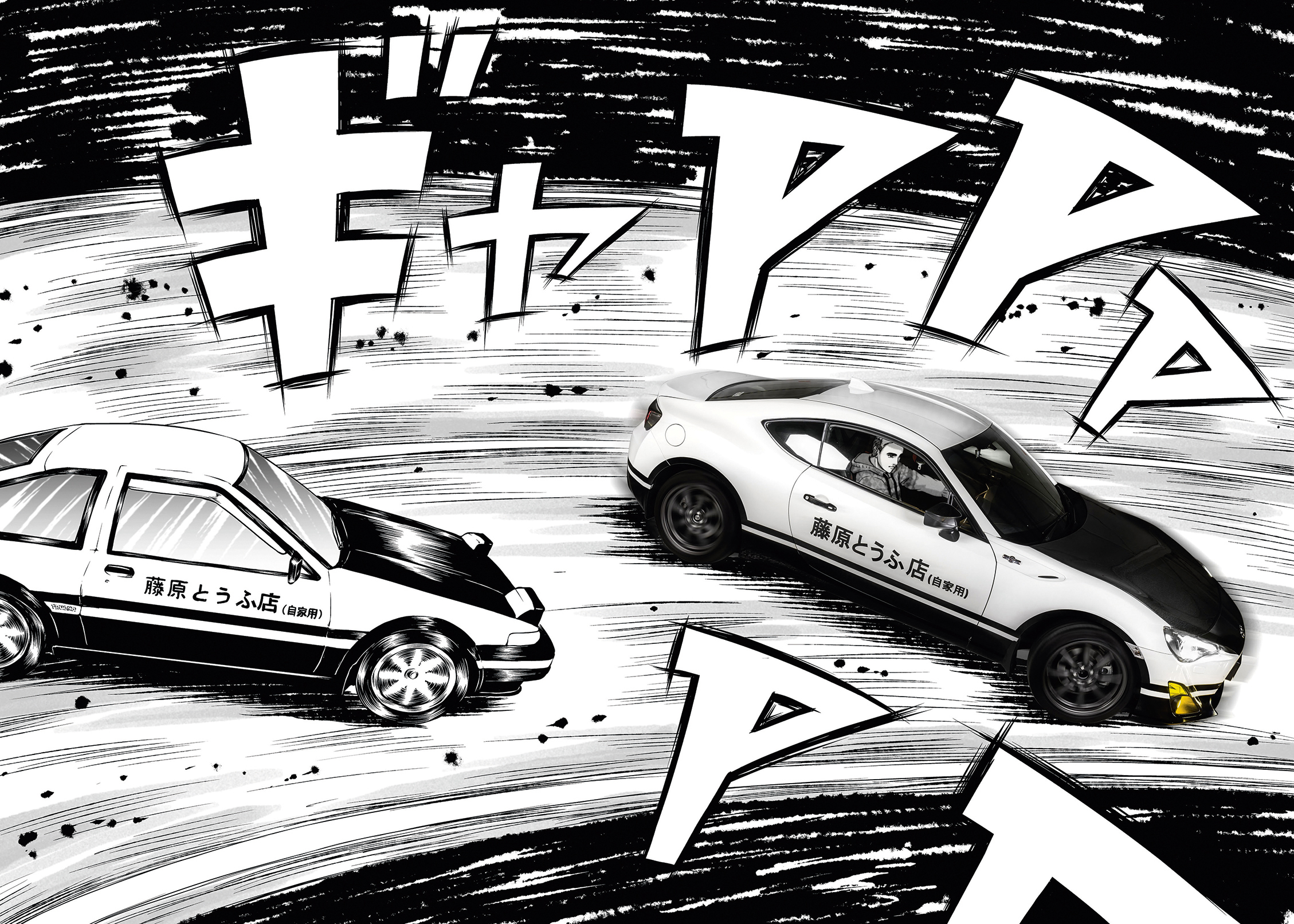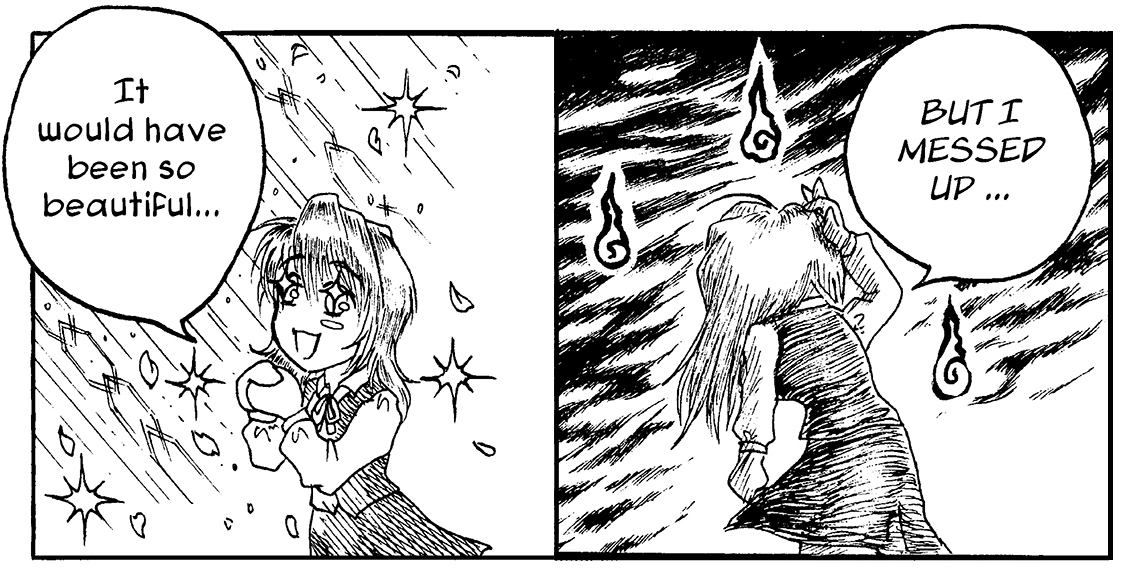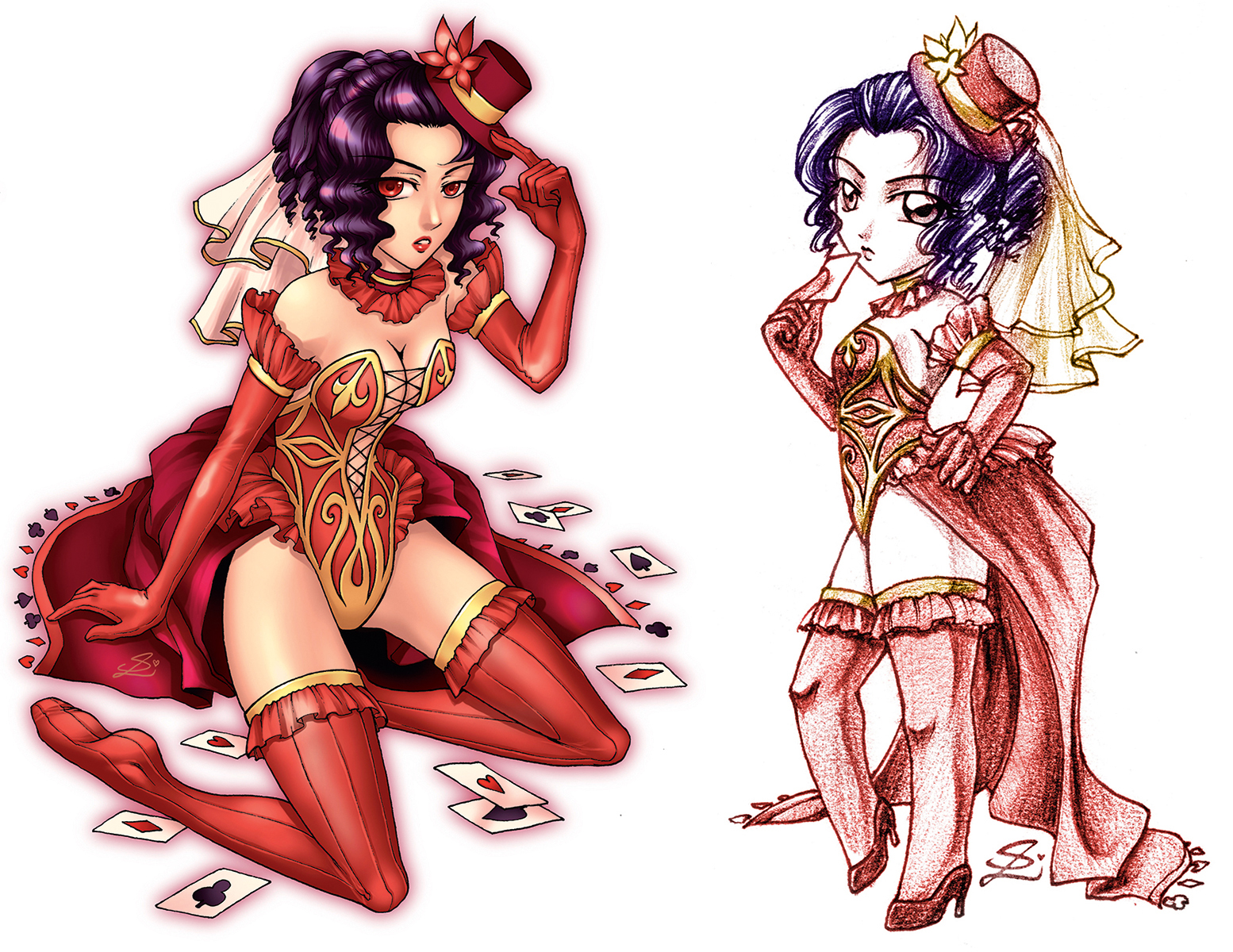How to create an authentic manga comic strip
15 tips to help you draw a manga comic story, the Japanese way.
11. Explore screentone effects

There are many things you can do with screentone besides just sticking it down for shading. Add white pencil over both lines and screentone for traditional white painted highlights. Try soft, burnished highlights by using an Eraser set to Dissolve. Use screentone just over the lines to give the art a blurry feeling. You can increase the contrast in your shadows by layering different screentones on top of each other, but be careful: you may get moiré if you use different densities or if you align them incorrectly.
12. Use Japanese sound effects

Japanese sound effects are incredibly diverse, using all manner of consonant and vowel combinations to describe crashes, thumps and slices. Pronunciations often more realistic than in English like 'roar' (GA-O-!) or 'slam' (pa-tan!). What’s unique to Japanese onomatopoeia are sound effects for abstract concepts ('shiiin' for a stare, or silence), facial expressions ('niko' for a smile) or even temperature ('poka poka' for warmth). They are an integral part of the artwork, so are hand-drawn at the point of inking, in an appropriate style.
13. Add visual grammar

Many symbols are used in comics to enhance the viewer’s understanding of what the characters are feeling, like punctuation marks for pictures. Perhaps a love heart to show romantic intentions, or a light bulb when someone has a bright idea.
Manga has some unique examples: a drop of sweat for nervousness or embarrassment, a hash mark on the forehead when someone is angry (mimicking raised veins), and little spirit wisps gathering when someone is feeling depressed.
14. Try out chibi

A chibi is a cute, squishy, mini-version of a person, squished down to just three to four head lengths tall, with a large head and a chubby body. Shoulders are rounded off, hips are wider, hands and feet become stubby.
Although these characteristics are childlike, remember that you’re not actually drawing a child! An adult chibi should still look like an adult, just highly stylised. In manga, characters are often portrayed as chibis when the story takes a lighthearted turn, for comic effect. Spot all the examples throughout this article!
15. Emphasise emotion with anthropomorphism

Another popular technique used in manga is ‘kemonomimi’, which literally means animal ears. For instance, if someone is being as sly as a cat, you can draw them with feline features like cat ears and a tail. You can even go further with cat eyes that have slit-pupils, and using the shape of cat’s mouth. Why not draw a disappointed guy as a sad puppy dog? A fierce mother as a dragon? Like chibi, kemonomimi can be used for effect in specific scenes, but it’s also popular as a character design technique for fantasy stories.
Get the Creative Bloq Newsletter
Daily design news, reviews, how-tos and more, as picked by the editors.
This article originally appeared in ImagineFX, the world's best-selling magazine for digital artists. Subscribe here.
Related articles:

Thank you for reading 5 articles this month* Join now for unlimited access
Enjoy your first month for just £1 / $1 / €1
*Read 5 free articles per month without a subscription

Join now for unlimited access
Try first month for just £1 / $1 / €1
